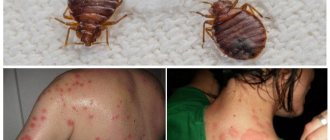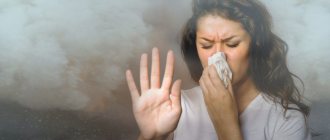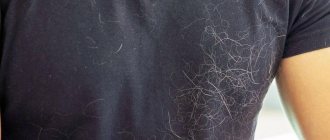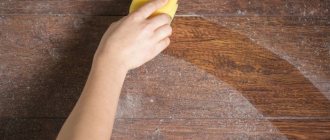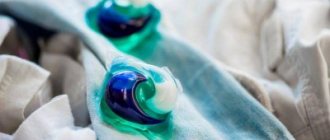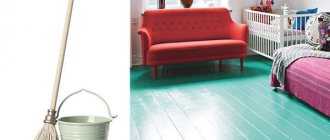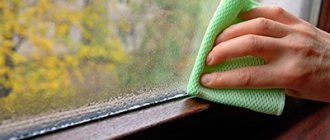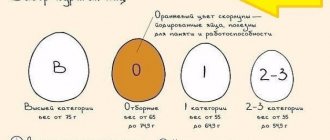Not only household members live with us in our houses and apartments, but also various types of insects. One of them is house ticks. Such a neighborhood is unpleasant and poses a threat to human health. It is very important that more than 150 types of parasites can live in a house, among which are:
- Dust;
- Predatory;
- Krysinykh;
- Lesnykh.
At the same time, dusty and predatory representatives of this class can constantly coexist with people, but forest ones are not permanent residents.
Appearance, habitat
A microscopic creature with body sizes from 0.1 - 0.5 mm. The features of his body can only be seen using a magnifying glass. About 150 species of dust mites can live in the home. All of them are synanthropic, live in apartments, houses, feed on skin scales, animal fur, and bird feathers.
The lifespan of an adult is 80 days. During this time, she manages to lay 60 eggs. Favorable habitat is humidity from 55%, temperature from 22 degrees Celsius. Ticks in the house are localized in places where food is available. Most often this is:
- carpets;
- paths;
- curtains;
- blankets;
- pillows;
- bedspreads;
- upholstered furniture;
- mattresses;
- Stuffed Toys.
And also places where cleaning has not been carried out for a long time - bookshelves, cabinets, floors, baseboards. House mites do not like the bathtub, toilet, because there is high humidity, balconies, or window areas where there is a draft.
Important!
Mites live in an apartment or house in numerous colonies - up to 10 thousand per 1 g of dust. The standard concentration for regular indoor cleaning is 100 pieces per 1 g of dust. This concentration is safe for humans and does not cause deterioration in well-being. Exceeding this indicator leads to allergies even in those who have not previously suffered from it.
Main spawn locations
Most ticks are blood-sucking and prefer to settle closer to humans. The favorite places of these parasites are upholstered furniture, bedding and pillows. You can tell that an unwanted neighbor has appeared in the house by the presence of regular bite marks. Ticks can also be found on window sills, on the leaves of house plants and on pets.
But the vast majority live in dust; the size of such mites is extremely small and beyond the reach of the human eye. But you can find out about the number of uninvited guests by taking a dust sample for analysis to a laboratory. However, no matter what species settles nearby, you should immediately take all possible measures to get rid of ticks, among which there is not a single species that would be considered safe for humans.
Select a tool on the website All tools =>>
Danger of house ticks
Arachnids do not bite and do not themselves pose a danger to humans, but their waste products have a negative impact. The substances present in excrement are harmful. They contain enzymes that break down human integument. Upon contact with the skin, the respiratory tract causes respiratory, contact, and food allergies.
Reaction to dust mites
The reaction can be temporary or permanent. Depends on the strength of a person’s immune system. Young children and people prone to allergies are more likely to suffer.
Signs of pests in the house:
- persistent rhinitis;
- weakness;
- headache that goes away when the person leaves the room;
- decreased ability to work;
- dry cough, especially in the morning;
- frequent sneezing;
- lacrimation;
- conjunctivitis;
- atopic dermatitis;
- asthma;
- itching on the skin;
- acariasis when parasites enter the gastrointestinal tract.
On a note!
If you are allergic to house mites, antihistamines do not help and the person constantly feels unwell. The situation can only be corrected by destroying parasites and reducing their number in the house.
More about the parasite
One of the human companions, the linen or bed mite, lives for several hundred years and is distributed in all parts of the world. He feels comfortable with a person. It feeds on dead skin cells, dandruff, lost hair, hides in the folds of dirty bed linen, in pillows, blankets, mattresses and feels great in a dusty room that has not been cleaned for a long time.
Note! A person does not notice the presence of a bed mite if he has good immunity and does not know what an allergic reaction is.
Sensitive people have it more difficult. Their skin and respiratory organs respond to pest bites with endless runny nose, coughing, sneezing, and skin irritations in the form of a small red rash.
It is possible to examine a bed mite (it is a type of saprophyte) only with the help of a microscope, it is so small.
A tick (as we see it in photographs) looks like this:
- yellow-brown;
- the body is flattened, covered with chitin;
- length – from 0.2 to 0.6 mm;
- six limbs with suction cups;
- head in the shape of a triangle.
An adult tick lives for a month and a half, during which time the female lays more than three hundred eggs.
How to get rid of ticks yourself
It’s important to understand right away that it is impossible to completely remove ticks. They enter the room through open windows and vents along with street dust and air. But there are a number of rules that will help cope with the situation.
- Getting rid of things always starts with cleaning. A salt solution will help kill the tick. They wipe the furniture, the floor, and spray the curtains. For 10 liters of water at room temperature, 6 tbsp is required. spoons of kitchen salt. It is imperative to wipe books with damp wipes to prevent the accumulation of dust and the proliferation of parasites.
- You can fight a colony of parasites with a dry climate. If unfavorable conditions are created, adult individuals will die, and the new generation will not be able to develop. The house should have a humidity level below 55%. Use special air dryers.
- Experts recommend fighting ticks with a vacuum cleaner. But we are not talking about an old household appliance, from which a column of dust rises in the house, but a modern one - with an aqua filter and separator.
- The fight against ticks in the sleeping area is carried out by regular washing of bedding. They need to be changed every week, washed in hot water, dried in the fresh air - street, balcony, well-ventilated room.
- You can get rid of house mites by replacing feather pillows with silicone ones, replacing the feather bed with an orthopedic mattress, and removing curtains and carpets. Replace furniture with fabric upholstery with leather goods. It is recommended to get rid of soft toys or wash them regularly.
Fighting dust mites
On a note!
House pests are afraid of drafts, so you need to regularly ventilate the room. However, if it is dusty outside, the effect will be the opposite.
Biological drugs
If there are children on the site, aggressive chemicals are contraindicated. Here you can get by with no less effective, but at the same time relatively safe biological drugs. These have proven themselves well:
- Apollo;
- Fitoverm;
- Aktofit;
- Vermitek.
Unlike chemicals, biological compounds can be used during the flowering or fruiting period of plants. Most drugs are resistant to rain. But here the tick does not die immediately after treatment, but within 3-5 days.
How to treat a house against ticks
If the above measures do not achieve the desired result, treating the apartment with special means will help.
- ORECK ALLERGEN CONTROL CARPET CLEANER. The product is produced in the USA and is used for cleaning carpets and fabric furniture. The active substance is the insecticide trichlorometaphos-3. its concentration is extremely low, but is destructive for dust parasites. The concentrate is diluted with hot water, applied to the surface and not washed off. Price within 2000 rubles.
- ALLERGOFF. Acaricidal aerosol produced in Poland. The volume of the can is 400 ml. The active substances are ranspermethrin, benzyl benzoate, pyriproxyfen. Spray throughout the house, do not wash off. The action lasts up to 7 months even with regular wet cleaning. Cost about 1700 rubles.
- ACARIL ALLERSEARCH. Homemade tick repellent is added to the washing machine. Eliminates dust mites and various allergens on clothes, soft toys, bedding, curtains. Active ingredients: tea tree oil, alcohols, methyl salicylate. The volume of 240 ml is enough for 12 washes. Price 2700 rub. Made in the USA.
- MILBIOL. The universal spray is sprayed on hard or soft surfaces. Produced in Switzerland. The cost of a 250 ml can is 150 rubles.
Remedies for dust mites
What to do if you can’t buy an expensive drug, prepare it yourself. Add baking soda, salt, and a few drops of essential oil to water at room temperature. Use for spraying fabric surfaces, wiping floors, furniture, walls. The most reliable prevention is regular wet cleaning and cleanliness in the house.
Review
The child developed allergies when he was two months old and could not be cured with anything. It gets worse every week. Then they discovered an allergy to house dust mites. Cleaning the house thoroughly improved the situation a little, but not entirely. We bought ALLERGOFF and treated the apartment. The allergy has subsided.
Elena, Moscow
Folk methods of struggle
If you want to do without chemicals completely, then it is better to use proven folk remedies. Experienced summer residents recommend the following:
- Irrigation of the area with solutions of essential oils. In particular, rosemary and mint. It turns out that the tick does not tolerate these odors. It is enough to add 5-10 drops of oil to water and spray it on garden crops.
- Citrus juice. It also works well as a bloodsucker remedy. Moreover, you can use both fresh juice and aromatic oils of orange, tangerine, and lemon for irrigation.
- Boric acid or soda. These products need to be sprinkled in places where ticks accumulate to get rid of them.
- Infusion of wormwood. Here you need to take 2 kg of chopped grass and pour moderately hot water (10 liters) for two days. After this, the infusion is boiled for half an hour. All that remains is to bring the decoction again with cold water to a volume of 10 liters. The finished product is diluted with clean water in a ratio of 1: 2 and the area is sprayed. Using the same principle, you can prepare infusions of geranium or sage. They also repel ticks.
- Garlic infusion. To prepare it, add two liters of water to four heads of garlic. Infuse the solution for 5 days in a dark and cool place. Before irrigating the area, the product is diluted with water in a 1:1 ratio.
- Cyclamen roots. An infusion is prepared from them according to this recipe - 100 grams of tubers are poured into 1 liter of boiling water. Now cook the roots until they are completely cooked until they soften. The finished product is cooled and strained. The area is sprayed with the decoction.
- You can also plant natural insecticides around the perimeter. These are chamomile, wild rosemary, tansy, bird cherry. They repel the bloodsucker and prevent it from entering the area.
Advice: in order to protect the territory as much as possible from tick invasion, it is advisable to team up with your neighbors and carry out simultaneous treatment of two or more areas. It is advisable to take the family to the dacha no earlier than 4-6 days after baiting the insect.
Ixodid ticks on the balcony, in the apartment
In the warm season, another dangerous tick becomes active - the ixodid tick. It is dangerous due to the spread of deadly diseases - tick-borne encephalitis, borreliosis. Lives in tall grass, on the lower branches of bushes. Found in the wild, among urban civilization.
If you find a tick at home or notice it on the balcony, it must be mercilessly destroyed. In the future, take care of protecting the premises. Treat the balcony with insecticidal repellents or a spray with essential oils. For 1 liter of water, 5 drops of geranium, lemongrass, eucalyptus, lavender or orange oil. Spraying with a home remedy should be repeated every 3 days during the parasite activity season.
If a tick has escaped at home, you need to vacuum the carpets, wash the floor, and carefully inspect the room using a magnifying glass. The arachnid can go without food for several months; the possibility of a bite if the parasite is not detected remains. It is recommended to treat the room with an insecticidal spray, leave it closed for 2 hours, ventilate, wash the floors and furniture with a soap-soda solution.
GOOD TO KNOW
- Dust mite bites are a myth. The insect does not bite, does not drink blood, does not carry infection and does not pose any other danger other than allergies. Its oral apparatus is simply not equipped to bite through the epidermis. However, several of its similar-sized “brothers” can easily do this. For example, eyelash mites cause inflammation of the eyelids (blepharitis). With the help of microscopic claws and a needle-shaped mouthparts, it pierces the epidermis and buries its head into the base of the eyelashes. The truth is that he might get stuck there forever, because he can’t move backwards.
- Are bed mites a parasite? The insect can be scolded with this word, but in fact it is a saprophage, because it feeds on the organic remains of our skin. A couple of grams of epithelium, which are lost by a person per day, is enough for a million individuals to eat “from the belly.” At the same time, they will create mountains of allergenic excrement, because each person will have bowel movements about 20 times a day.
- Bed mites and mold. Both are always present in the apartment, especially getting along in warm, humid conditions. Mold can cause pneumonia with decreased immunity, as well as respiratory allergies. In collaboration with pyroglyphids, the latter property increases significantly. The dead horny scales of the epidermis are glued together by fungi, begin to disintegrate and are easily eaten by mites. Mold helps in the nutrition and digestion of an unwanted apartment guest.
- Ticks and bed bugs are both called bed bugs. But these are two different pests. The bug is a real parasite, a nocturnal bloodsucker; its only source of food is the blood of humans and animals. The bug is visible to the naked eye - a red-brown insect 3-8 mm in size with a flattened body. The main harm is bites that interfere with normal sleep, as well as the spread of infections.
- "Brothers" in size. Household microscopic mites are not limited to pyroglyphids. We have already mentioned eyelash mites. The scabies mite, like the dust mite, also feeds on the keratin of the skin. Only females make passages in the epidermis, leaving saliva, eggs and excrement there, to which an immune-allergic reaction occurs. Flour mites can be found in flour, dried fruits, and cheese. Upon contact with it, flour scabies develops - an occupational disease of bakers, bakery workers or flour warehouses. The external auditory canal can be parasitized by the ear mite Otodectes cynotis. It creeps into the human ear from cats and dogs.
Prevention
If a laboratory study found no more than 100 individuals in 1 gram of dust, then it is too early to sound the alarm. But if the results show that more than 500 mites were detected per gram, then it’s time for family members to start worrying about their health. If around 1000 individuals per gram are found, then this number will certainly lead to health problems.
Typically, such studies are carried out using test strips, reagents for detecting feces and insect remains, or in special laboratory conditions of the sanitary services of the city of Khanty-Mansiysk.
